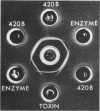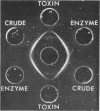Abstract
Heckly, Robert J. (University of California, Berkeley). Differentiation of exotoxin and other biologically active substances in Pseudomonas pseudomallei filtrates. J. Bacteriol. 88:1730–1736. 1964.—Denaturing agents such as phenol, formaldehyde, and urea reduced lethal toxicity and proteolytic activity of partially purified preparations from Pseudomonas pseudomallei at about the same rate. Neither toxin nor enzyme was stable at pH 11, when the solution was adjusted with sodium hydroxide, but there was a slight difference in their rates of inactivation. However, under certain conditions, ammonium hydroxide destroyed most of the enzymatic activity with only a slight effect on lethality. Conversely, toxin was less stable in acid solutions than was the enzyme. Thus, treatment with ammonium hydroxide or acetic acid yielded preparations with either a low or a high enzyme-to-toxin ratio, indicating that lethality was not dependent on enzyme activity. Although proteolysis of any one of the essential factors in the blood coagulation system can inhibit clotting of blood, the potent anticoagulant activity of culture filtrates was not associated with its proteolytic activity, but was directly correlated with lethal toxicity. It is of considerable interest that the necrotoxicity was, however, associated with enzymatic activity and not with lethality. Serological reactivity of the enzyme, as well as its proteolytic activity, was altered by ammonium hydroxide. Similarly, antigenicity and toxicity of the lethal toxin were reduced by acidification. Each acid- or alkali-treated preparation produced a single precipitin line in double diffusion in agar when reacted with antisera produced by injection of crude filtrate. Partially purified preparations, having both lethal and enzymatic activity, produced two lines, one identifiable with the enzyme preparation, and one with the toxin. Furthermore, specific precipitation with the respective antisera removed either enzyme or toxin from crude preparations. Therefore, the lethal exotoxin and proteolytic enzyme are separable entities.
Full text
PDF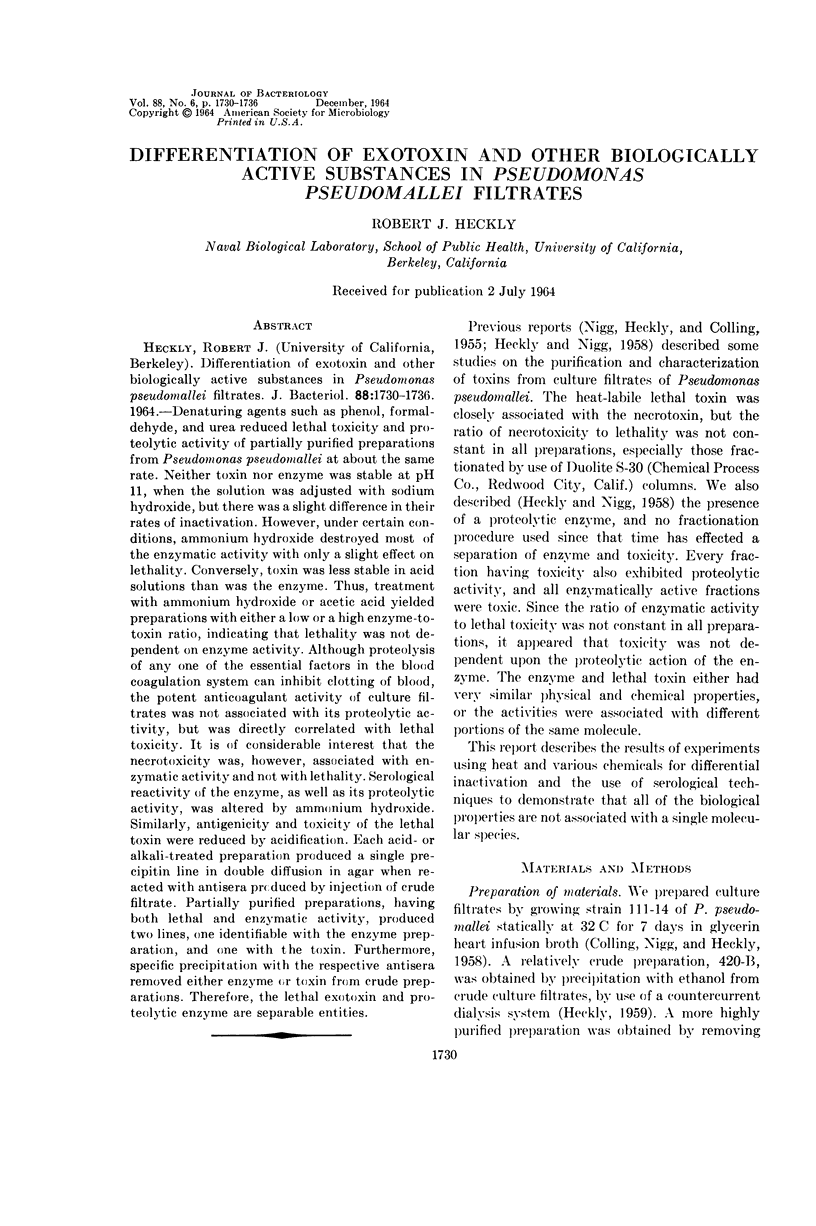
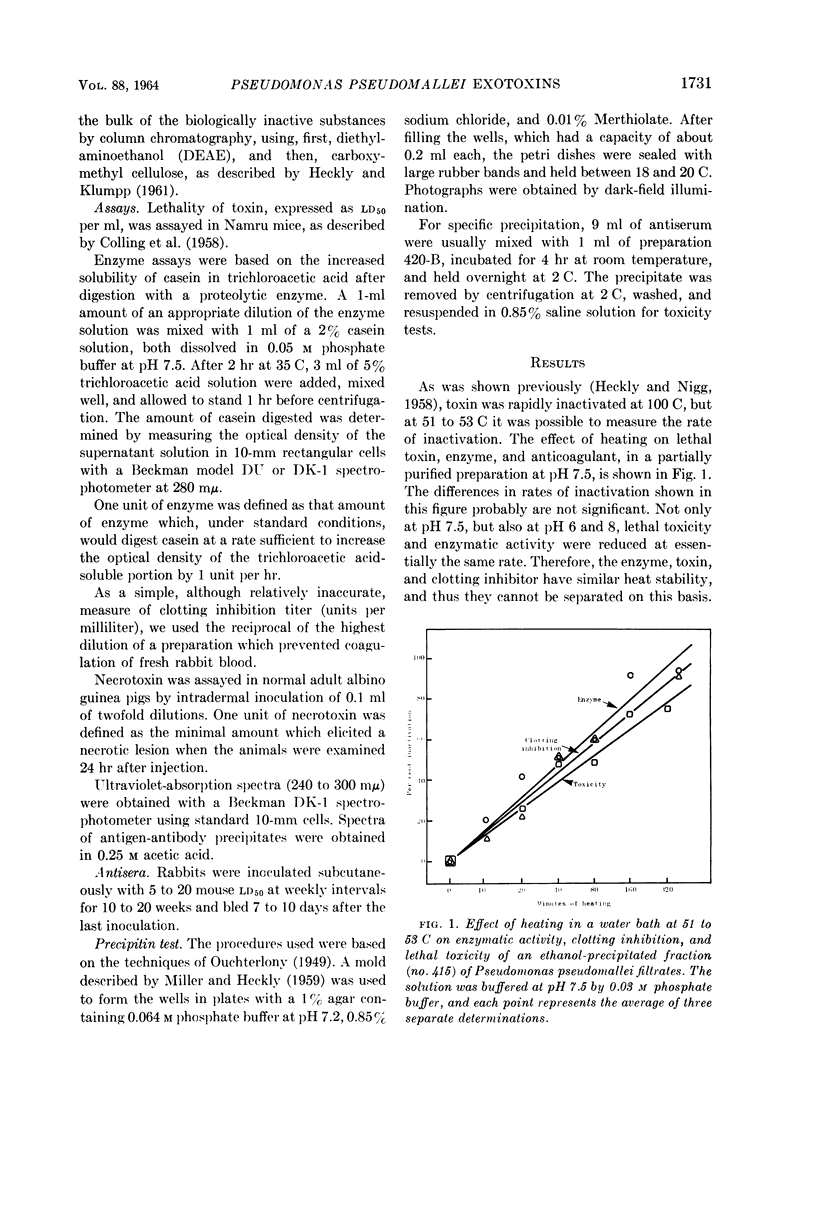
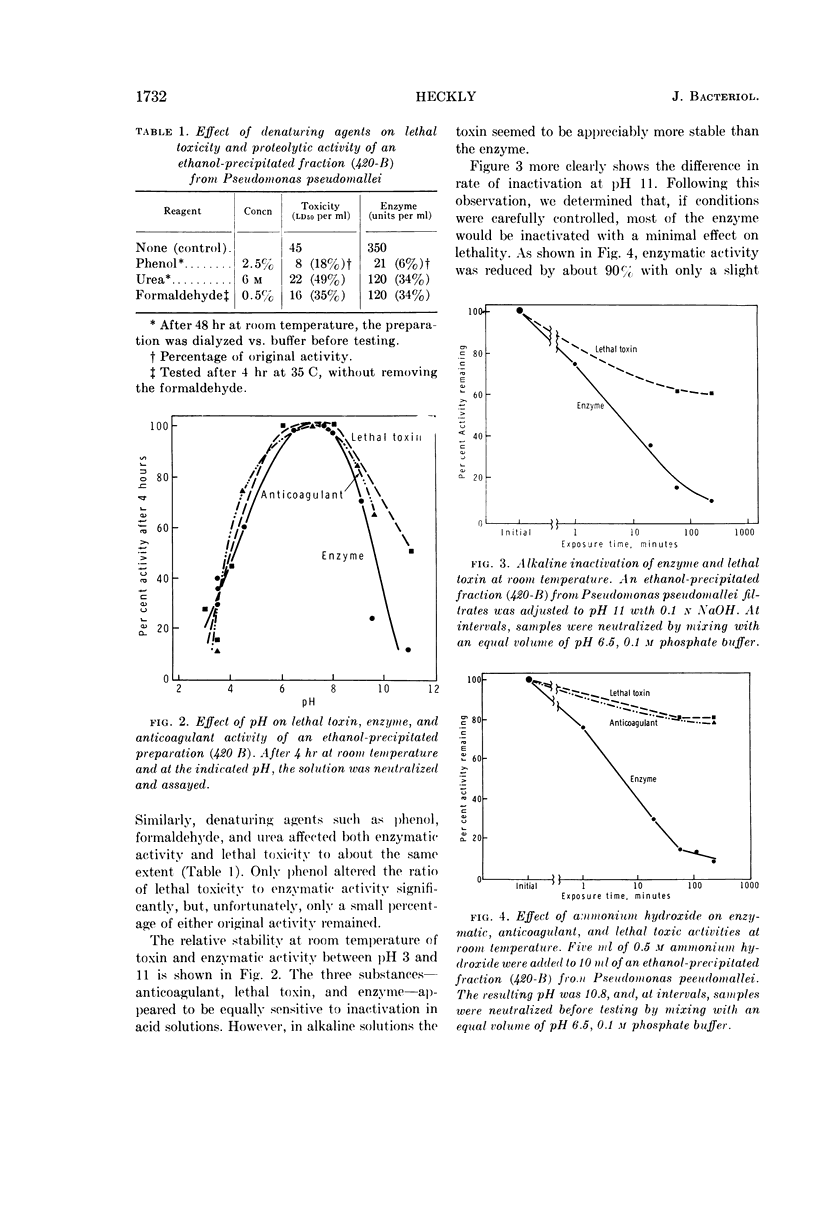
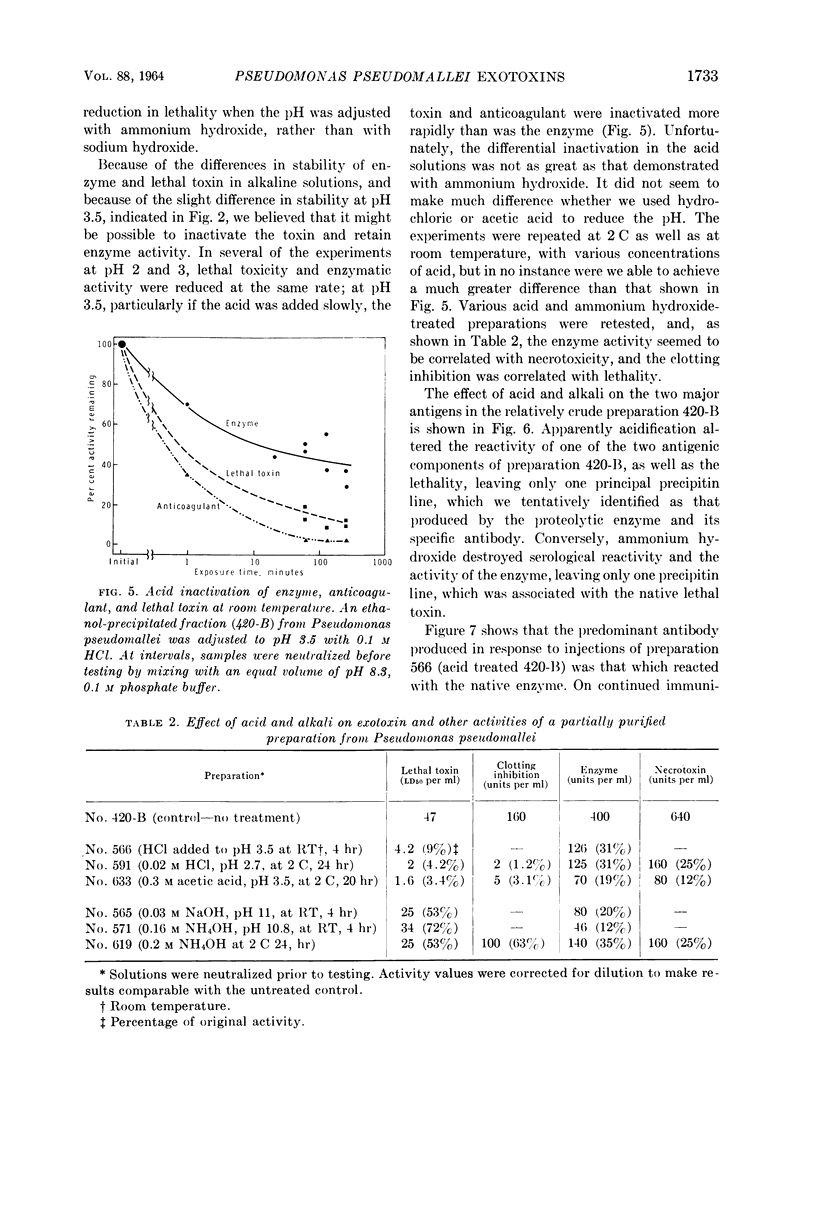
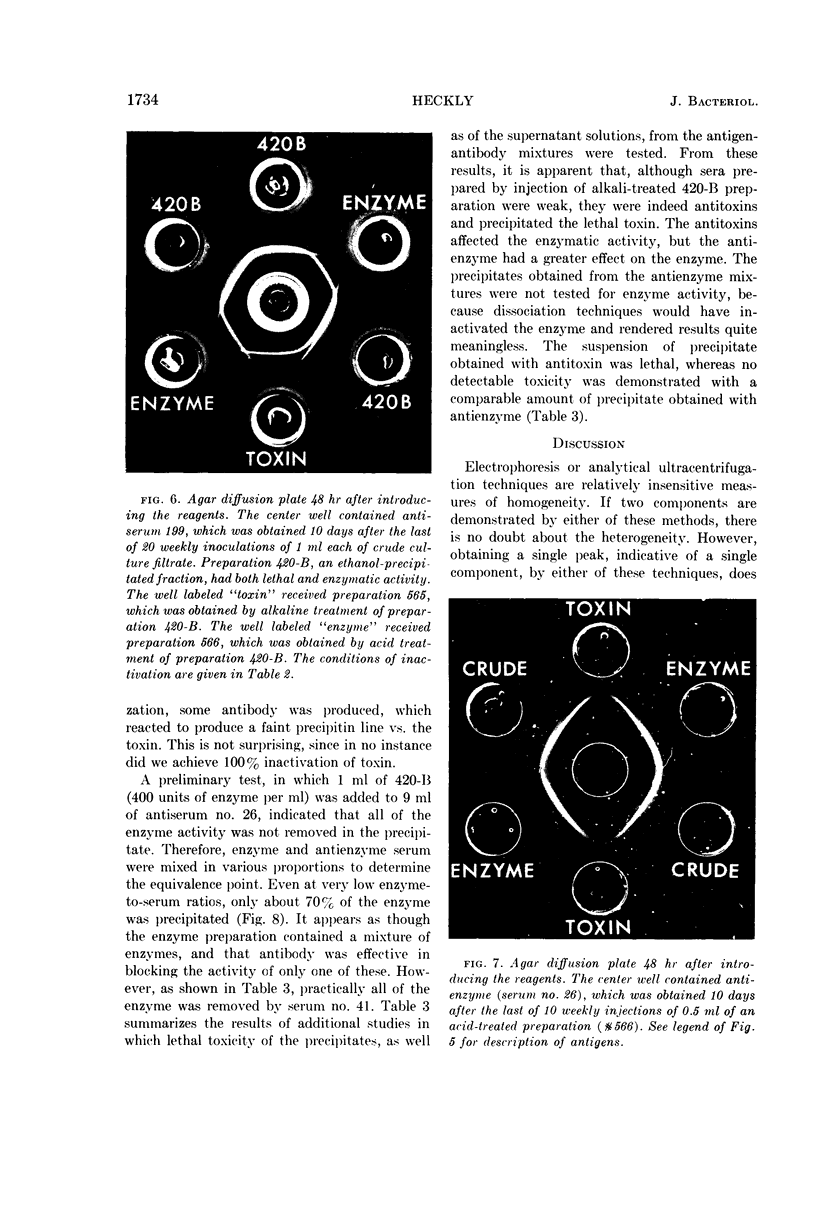
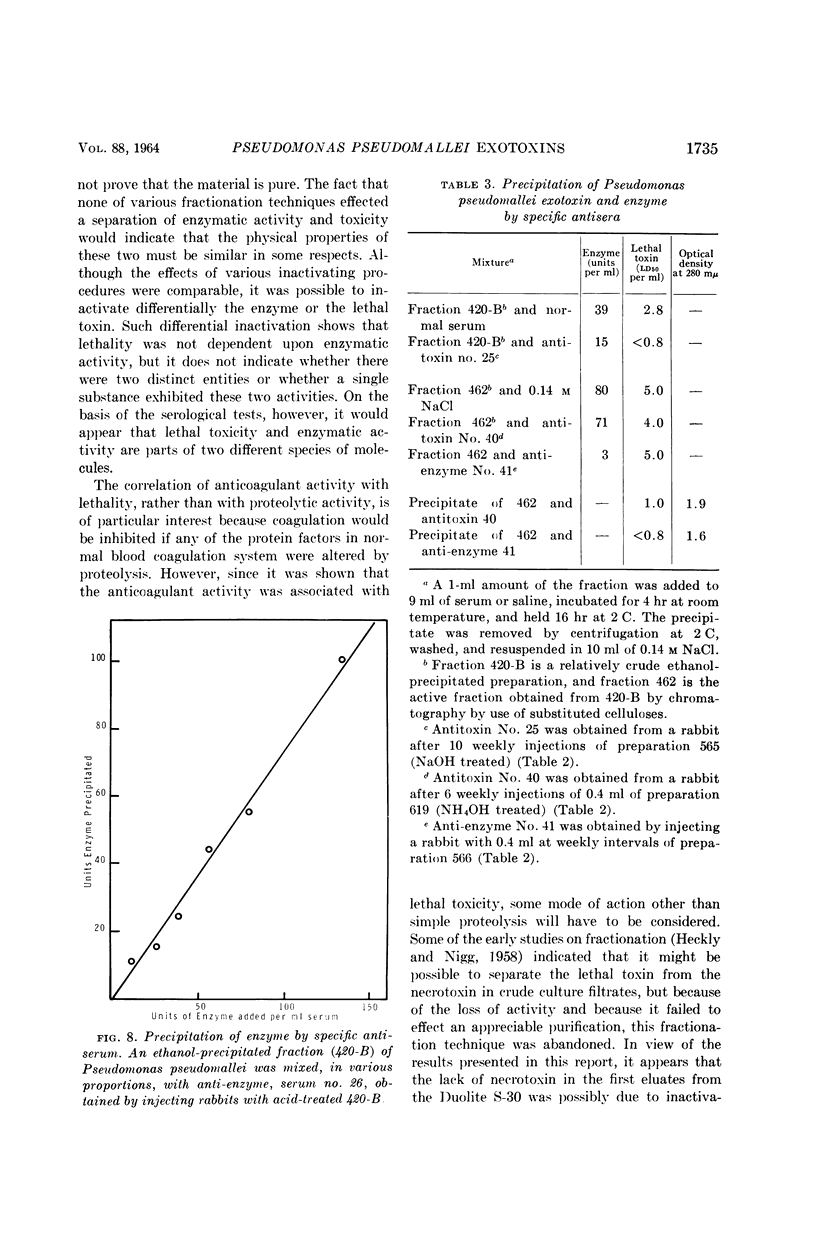
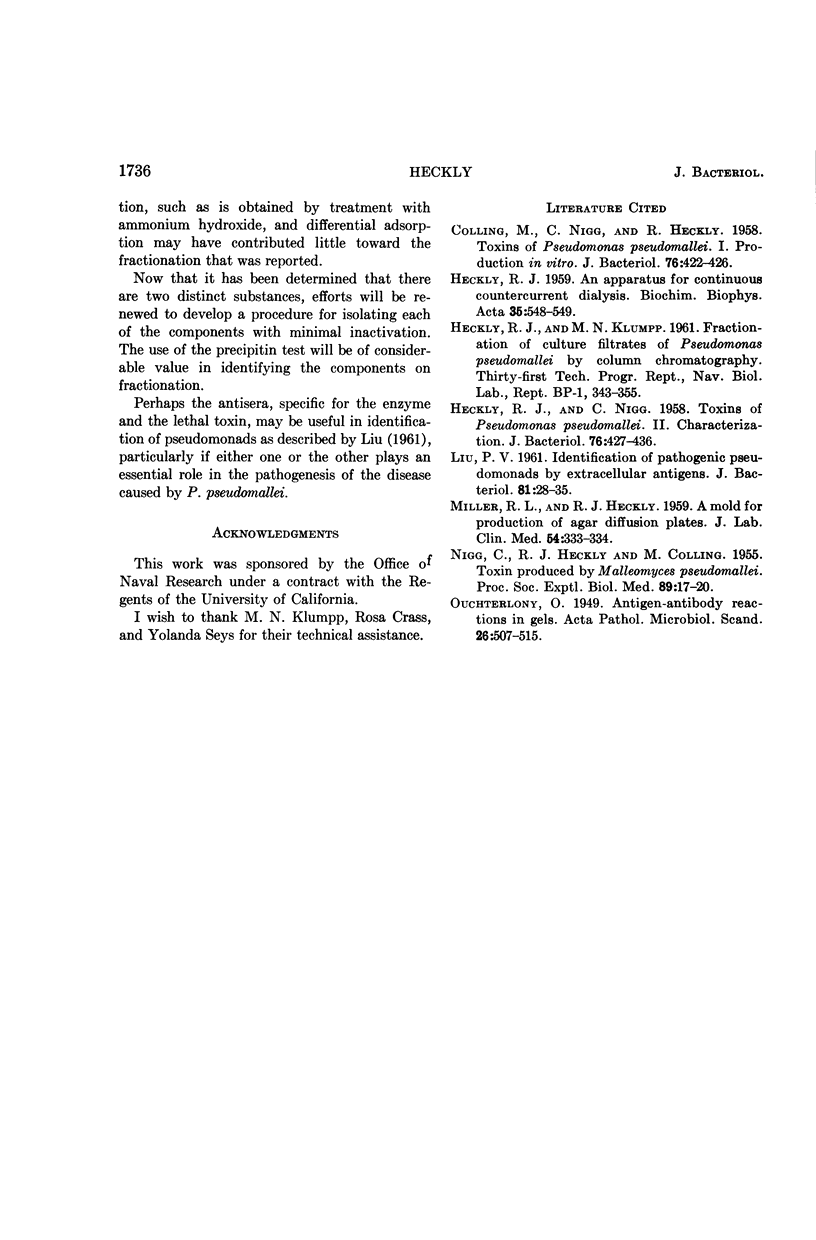
Images in this article
Selected References
These references are in PubMed. This may not be the complete list of references from this article.
- COLLING M., NIGG C., HECKLY R. J. Toxins of Pseudomonas pseudomallei. I. Production in vitro. J Bacteriol. 1958 Oct;76(4):422–426. doi: 10.1128/jb.76.4.422-426.1958. [DOI] [PMC free article] [PubMed] [Google Scholar]
- HECKLY R. J. An apparatus for continuous counter-current dialysis. Biochim Biophys Acta. 1959 Oct;35:548–549. doi: 10.1016/0006-3002(59)90410-x. [DOI] [PubMed] [Google Scholar]
- LIU P. V. Identification of pathogenic pseudomonads by extracellular antigens. J Bacteriol. 1961 Jan;81:28–35. doi: 10.1128/jb.81.1.28-35.1961. [DOI] [PMC free article] [PubMed] [Google Scholar]
- MILLER R. L., HECKLY R. J. A mold for production of agar diffusion plates. J Lab Clin Med. 1959 Aug;54:333–334. [PubMed] [Google Scholar]
- NIGG C., HECKLY R. J., COLLING M. Toxin produced by Malleomyces pseudomallei. Proc Soc Exp Biol Med. 1955 May;89(1):17–20. doi: 10.3181/00379727-89-21700. [DOI] [PubMed] [Google Scholar]



